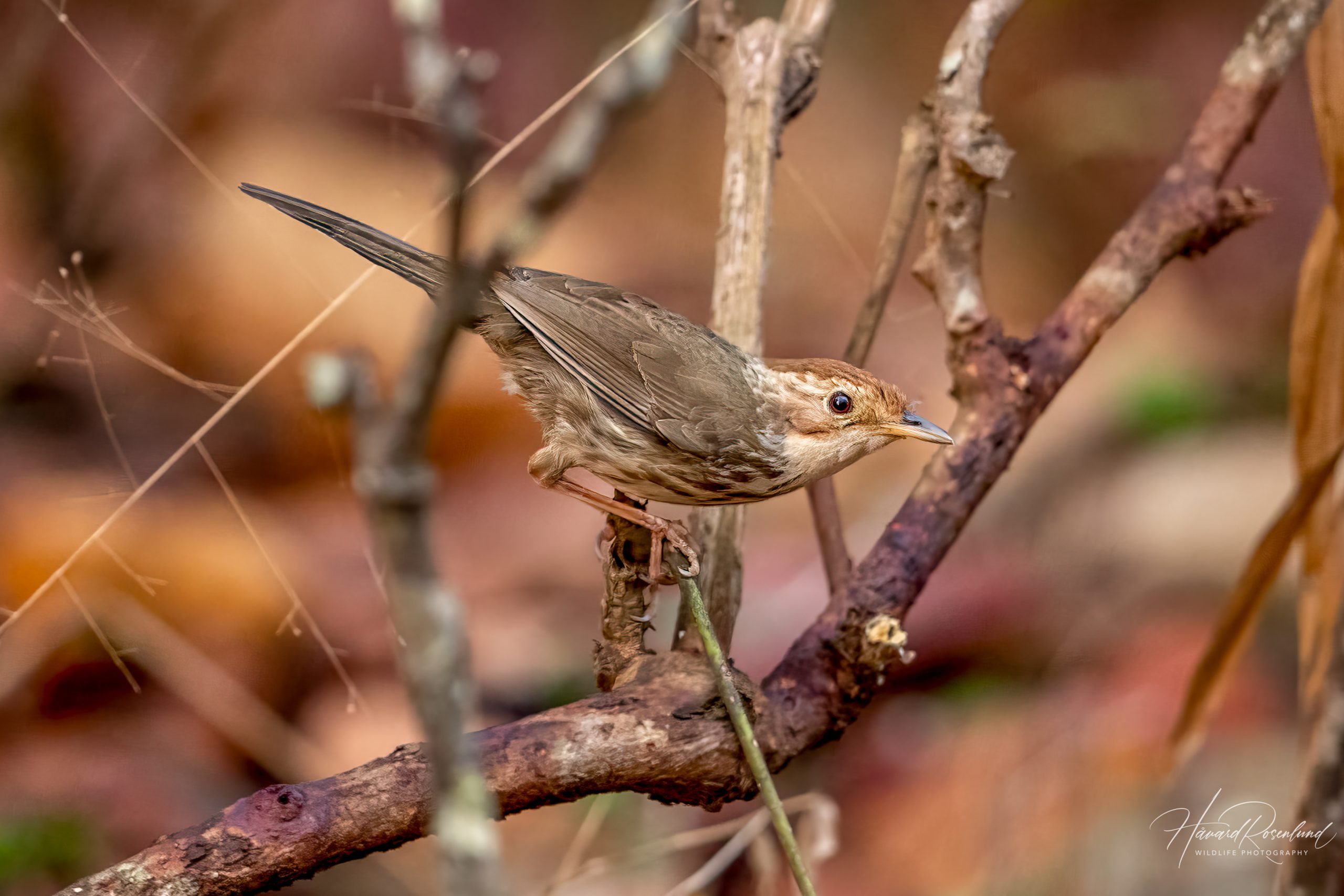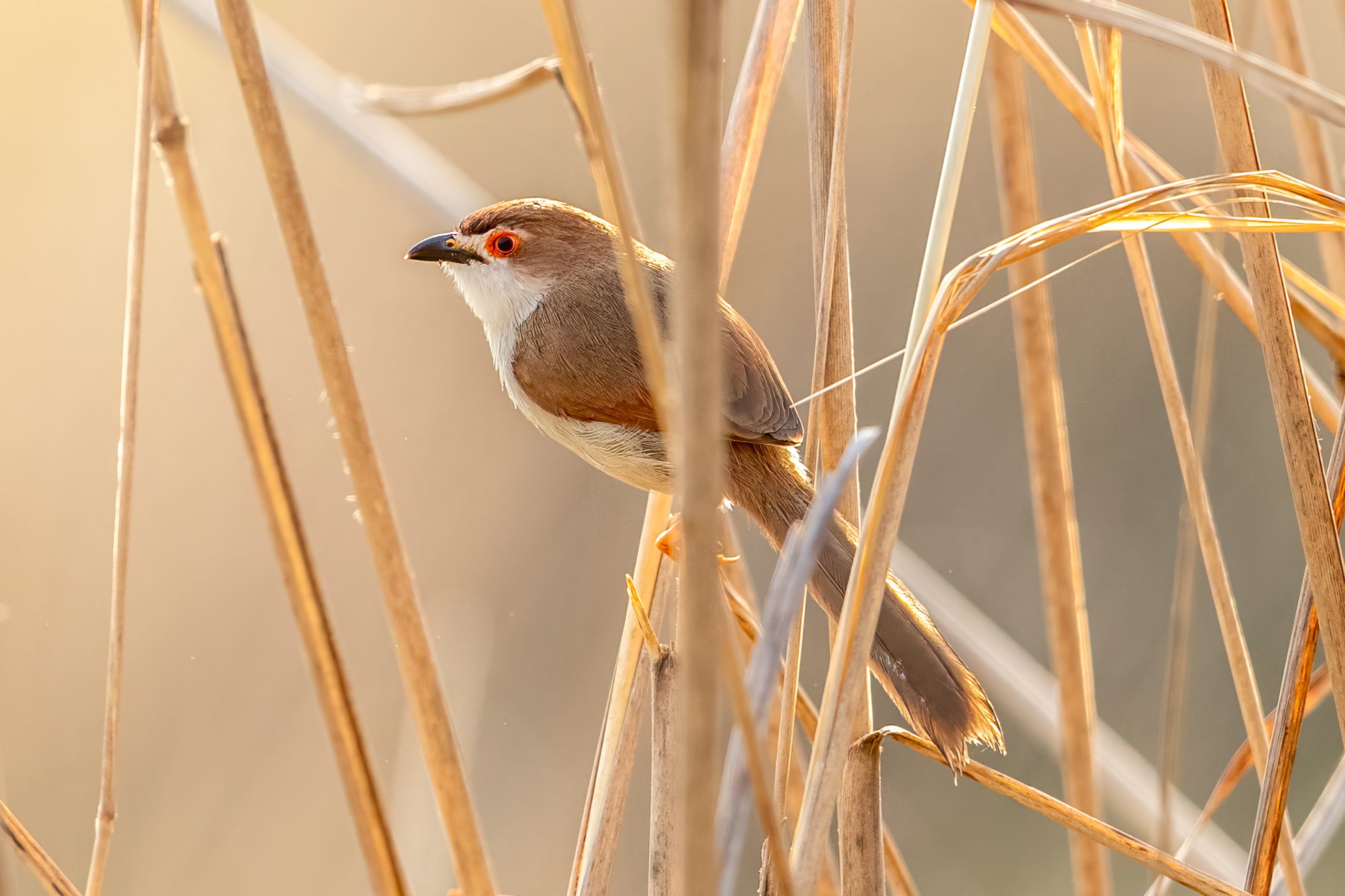Puff-throated Babbler
(Pellorneum ruficeps)
Description
The puff-throated babbler (Pellorneum ruficeps) is a small, secretive bird found primarily in South and Southeast Asia. It measures approximately 15–17 cm (5.9-6.7 in) in length, with a wingspan of around 18–20 cm (7.1-7.9 in). Characteristic features of the puff-throated babbler include its rufous-brown crown and nape, a distinctive puffed-up throat that is white, and an olive-brown back and wings. The underparts are generally white, streaked with brown, and its eyes are dark red. This bird is similar to other ground babblers, but it can be distinguished by its distinctive plumage and puffed-up throat.
Diet & habitat
The puff-throated babbler primarily inhabits dense undergrowth in both dry and moist forest environments, including deciduous forests, bamboo thickets, and scrublands. It prefers areas with thick vegetation, where it forages for food. This species is an insectivore, feeding mainly on insects, spiders, and other small invertebrates. It forages close to the ground, using its strong legs to scratch and uncover insects hidden in leaf litter. Occasionally, it may also consume seeds and berries, especially during the dry season when insect availability decreases.
Behavior
Puff-throated babblers are generally shy and elusive, often staying hidden within thick underbrush. They are more often heard than seen, as they frequently vocalize with a series of melodious whistles. These birds are also known to be quite active, constantly foraging and moving through the undergrowth in search of food. They are typically seen alone or in pairs, but during the breeding season, they may also be observed in small family groups.
The species exhibits territorial behavior, especially during the breeding season, when males sing to establish and defend their territories. Puff-throated babblers are also known for their distinctive “puffing” throat display, which they use during interactions with other birds and as part of their mating rituals.
Nesting
The breeding season of the puff-throated babbler varies depending on its geographical location but generally occurs from March to August. The species is known for its secretive nesting behavior. Nests are often built low in bushes or on the ground, well-concealed among dense vegetation. The nest itself is a loose structure made of leaves, grass, and other plant materials. A typical clutch consists of 2 to 4 eggs, which are incubated by both parents. The incubation period lasts around 14 days. After hatching, both parents participate in feeding the chicks. The fledgling period, during which the young birds grow and develop feathers necessary for flight, lasts approximately 12-14 days.
Status
The puff-throated babbler is listed as least concern by the IUCN Red List, indicating that it is not considered at immediate risk of widespread decline. However, habitat destruction due to deforestation and agricultural expansion poses a potential threat to certain populations, especially those in heavily forested regions.







